
Cutler Bay is an incorporated town in Miami-Dade County, Florida established in 2005, with a population of approximately 45,425 as of 2020. With 45,425 people, Cutler Bay is in 9th place of the top 10 most populous municipalities of the 34 municipalities that make up Miami's urban core, it is the 33rd most populous municipality out of the 163 municipalities that up Miami Metropolitan Area and Cutler Bay is also the 88th most populated city in the state of Florida out of 919 cities.
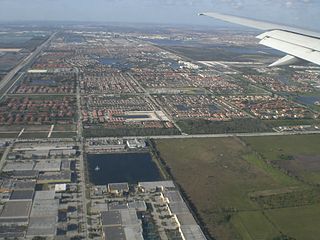
Doral is a city in Miami-Dade County, Florida, United States. One of 34 municipalities in the county, it is located one mile from Miami International Airport and three miles from Downtown Miami. The city regularly hosts more than 100,000 people who work in Miami. Doral occupies 15 square miles (39 km2) bordered on the west by the Ronald Reagan Turnpike and the Florida Everglades, on the north by the Town of Medley, on the east by the Palmetto Expressway and on the south by the Dolphin Expressway and City of Sweetwater. It is a principal city of the Miami metropolitan area, which was home to 6,138,333 people in 2020.
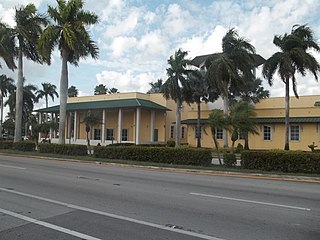
Florida City is a city in Miami-Dade County, Florida, United States and is the southernmost municipality in the South Florida metropolitan area. Florida City is primarily a Miami suburb and a major agricultural area.
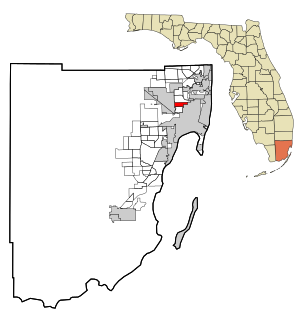
Gladeview is a census-designated place (CDP) in Miami-Dade County, Florida, United States. The population was 11,535 at the 2010 census.

Homestead is a city within Miami-Dade County in the U.S. state of Florida, between Biscayne National Park to the east and Everglades National Park to the west. Homestead is primarily a Miami suburb and a major agricultural area. It is a principal city of the Miami metropolitan area, which was home to an estimated 6,012,331 people at the 2015 census.

Kendall is a census-designated place in Miami-Dade County, Florida. At the 2020 census, the area had a population of 80,241.
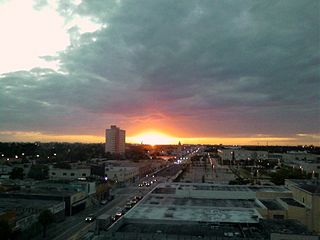
Allapattah is a neighborhood, located mostly in the city of Miami, Florida in metropolitan Miami. As of May 2011, the county-owned portion of Allapattah, from State Road 9 to LeJeune Road, is being annexed by the city proper.

Palmetto Bay is a suburban incorporated village in Miami-Dade County, Florida, United States. The population was 23,410 during the 2010 US census.

The Miami-Dade Fire Rescue Department (MDFR) provides fire protection and emergency medical services to the unincorporated parts of Miami-Dade County, Florida, along with 30 municipalities located within the county. In all the department is responsible for 1,883 square miles (4,880 km2) of land.

Crandon Park is an 808-acre (3.27 km2) urban park in metropolitan Miami, occupying the northern part of Key Biscayne. It is connected to mainland Miami via the Rickenbacker Causeway.
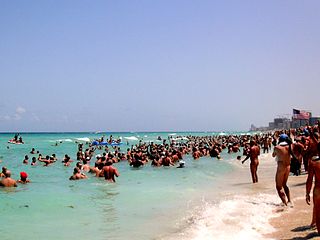
Haulover Park is a 177-acre (72 ha) urban park owned and operated by Miami-Dade County Parks, Recreation & Open Spaces Department, located in metropolitan Miami, just north of Bal Harbour, Florida. The park is located on a shoal between the Atlantic Ocean and Biscayne Bay, just north of the Broad Causeway and Collins Avenue.

Dadeland is a commercial district and urban neighborhood similar to an edge city, amid the sprawling metropolitan Miami suburbs of Kendall, Glenvar Heights, and Pinecrest, in the U.S. state of Florida, at the end of the Metrorail line.

The Federal Correctional Institution, Miami is a low-security United States federal prison for male inmates in Florida. It is operated by the Federal Bureau of Prisons (BOP), a division of the United States Department of Justice. The institution also has an adjacent satellite prison camp that houses minimum-security male offenders.
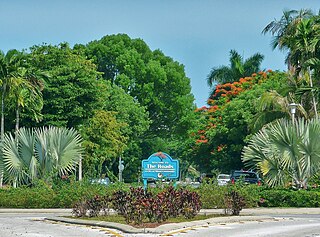
The Roads is a neighborhood of Miami in Miami-Dade County, Florida. It is a triangular area located south of SW 11th Street, between SW 12th Avenue and SW 15th Road, just west of Brickell.

The Julia Tuttle Causeway sex offender colony was an encampment of banished, registered sex offenders who were living beneath the Julia Tuttle Causeway—a highway connecting Miami, Florida to Miami Beach, Florida, United States—from 2006 to April 2010. The colony was created by a lobbyist named Ron Book, who wrote ordinances in several different Miami-Dade County cities to restrict convicted sex offenders from living within 2,500 feet (760 m) of schools, parks, bus stops, or homeless shelters. Since Book was also head of the Miami Homeless Trust, he was also in charge of finding housing for the released sexual offenders. Under these ordinances, the only areas where sex offenders could legally reside within Miami-Dade County were the Miami Airport and the Florida Everglades. Miami-Dade laws are significantly stricter than State of Florida laws on residency restrictions for sex offenders. Florida state law required that no sex offender could live within 1,000 feet (300 m) from "where children gather". Under that requirement, housing was possible; however, because of Book's lobbying, the Dade County Commission increased that number to 2,500 feet (760 m), thereby banishing hundreds of local citizens who then began gathering under the Julia Tuttle Causeway.
The Miami-Dade Corrections & Rehabilitation Department (MDCR) is a County Department serving all of Miami-Dade County's 30 municipal police departments, the county police department (MDPD), as well as state agencies. The MDCR is the 7th largest county jail system in the United States, with approximately 2,906 employees. [FY 2009–10] The Department is still often referred by its former name, DCJ for Dade County Jail. Miami-Dade Corrections Officers are easily identified by their white shirts with green trousers with gray stripe. Miami-Dade Corrections vehicles are identified by their green and white livery. MDCR officers carry silver badges, while officers with the ranks of sergeant and above carry gold badges. The badge is exactly the same as the Miami-Dade County Police Department to reflect the fact that they were at one time one entity. The MDCR operates six detention facilities with a system-wide average of approximately 7,000 inmates, and books approximately 114,000 inmates annually. Several facilities are nationally accredited by the American Correctional Association, as well as at the state level by the Florida Corrections Accreditation Commission. The current director of the department is Daniel Junior, who was appointed by Miami-Dade Mayor Carlos Giménez. The Department's headquarters is located at 2525 NW 62nd Street, Miami, Florida.

Miami-Dade County is a county located in the southeastern part of the U.S. state of Florida. The county had a population of 2,701,767 as of the 2020 census, making it the most populous county in Florida and the seventh-most populous county in the United States. It is also Florida's third largest county in terms of land area, with 1,946 square miles (5,040 km2). The county seat is Miami, the core of the nation's ninth largest and world's 34th largest metropolitan area with a 2020 population of 6.138 million people.
The Everglades Correctional Institution is a Level 5 security prison facility for adult males in unincorporated Miami-Dade County, in the state of Florida, near Miami. Originally planned as a mental health facility, it was converted to a major Correctional institution in 1995.
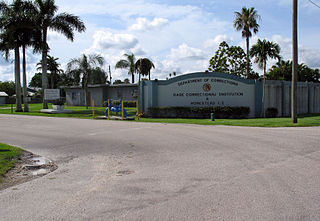
The Dade Correctional Institution is a prison in unincorporated Miami-Dade County, Florida, near Florida City, and south of Homestead, in Greater Miami. It houses adult males. It opened in September 1996. It is a part of the Florida Department of Corrections, and is right next to the Homestead Correctional Institution which houses female inmates.

The Central Business District (CBD) of Miami is the historic central business district and city center of what has become Greater Downtown Miami in Miami, Florida. Over 92,000 people work in Miami's Central Business District.
















